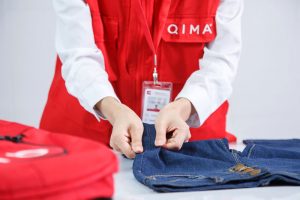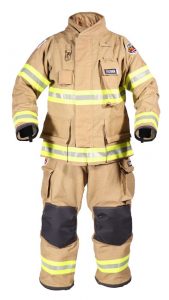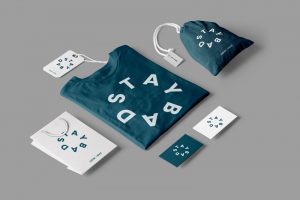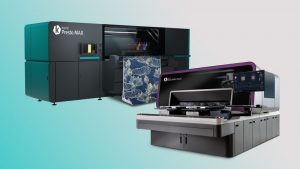 By Chris Pinaire, MBA, PMP
By Chris Pinaire, MBA, PMP
The “seven deadly sins of manufacturing,” also known as the seven wastes of lean manufacturing, categorize inefficiencies that can affect a company’s productivity and profitability and a lot more. Some of these sins are obvious, such as flawed inventory management, inconsistent transportation processes, and product defects. Others can be hard to identify and quantify. Either way, every sin creates an unwanted impact on a business.
Learning how to identify and prevent these sins will reduce or eliminate unnecessary waste, improve efficiency and productivity, protect profitability and cash flow, and uphold a company’s reputation. If any of these sins are lurking within a business, here’s how to identify and rectify them.
1. Transportation
Delivering products on time to manufacturing customers is essential for building vendor loyalty. However, waste created by unnecessary movement of raw materials, finished goods, or work in process (WIP) can make it difficult to meet expected shipping dates, leading to increased costs and dissatisfied customers. In addition to wasting fuel and energy costs, excess transportation can also trigger other wastes such as waiting and motion.
Transportation waste often results from poor plant design, such as large distances between operations. It can also be generated by large batch sizes, poorly designed production systems, and multiple storage facilities, as well as inefficient material flows during storage, retrieval, and transfer. To prevent this kind of waste, design a sequential flow from raw materials to finished goods, don’t store WIP in inventory, and maintain consistency and continuity when assigning job priorities.
Value stream mapping (VSM), a lean manufacturing technique for analyzing, designing, and managing the flow of materials through the shop floor, can be very effective in identifying transportation waste. It involves full documentation of all aspects of production flow rather than just mapping specific production processes.
The voice of customer (VOC) can be used in conjunction with VSM to add important information. If the VOC has information critical to success that is not supported in a business’s VSM — for example, the customer says they want delivery in X days, the VSM says the process takes greater than X days — the two documents together can guide the improvement efforts.
2. Inventory
Excess inventory is a form of waste related to the holding costs of raw materials, WIP and finished goods. In addition to driving up inventory costs, this deadly sin ties up capital, takes up space, and allows for inventory to age and obsolete. Excess inventory is a good indicator of other issues within the production process.
Excess material purchasing resulting from poor forecasting and production planning is often caused by a poorly designed link between the procurement department and the manufacturing and scheduling departments of an organization. Due to a lack of visibility and an unknown future, procurement is forced to err on the side of ordering too much material.
Purchasing raw materials only when needed and reducing the need for safety stock will minimize this waste. ERP Inventory software simplifies this process by tracking inventory counts with remarkable accuracy to facilitate the reduction of over- or under- purchasing.
Mobile barcode scanning for inventory receiving and movement can reduce this type of waste by providing high levels of inventory visibility and control. It reduces the need for manual inventory and cycle counts, increasing accuracy of stock on hand. Real-time inventory data improves the performance of forecasting software so purchasers know when to order more stock.
3. Motion
This deadly sin consists of unnecessary movements by employees or machines that don’t add value to the product or service. Common sources of motion waste include poor workstation layout and negligent production planning and process design. Shared equipment and machines, siloed operations, and lack of production standards can be added to this list.
Motion on the shop floor can include reaching for raw materials, walking to get tools or materials, or moving finished goods out of the work area. Redesigning the shop floor to simplify the work will help reduce excess motion. In the office, wasted motion can include searching for files, sifting through spreadsheets or multiple folders to find what is needed, excess mouse clicks, and double data entry. ERP software can jettison a lot of this waste by automating processes to eliminate manual data entry, reduce paper, and simplify purchasing and receiving.
Implementing 5S, a five-step methodology that creates a more organized and productive workspace, can also play a role in minimizing motion waste:
1. Sort — Keep only what you need
2. Set in Order — Keep it organized
3. Shine — Keep it clean
4. Standardize — Keep it the same across workstations
5. Sustain — Keep it consistent over a long-time horizon
4. Waiting
Wasting time waiting for materials, information, equipment, or people is considered a sin because it slows production, increases costs, and adds no value. Furthermore, it can prevent finished goods from being delivered on time — a bigger sin in the minds of customers.
A major source of waiting occurs when production employees don’t know which job to be working on now and what comes up next or have not been provided with the necessary raw materials. ERP software can solve that problem by making the information directly available to machinists without leaving their workcenters and providing the warehouse with a dispatch list of jobs slated to start.
To reduce this waste, use VSM to analyze the total time spent working on jobs from order to shipment and summarize the amount of time where value is not added to the product. Make the process flow as seamless as possible by creating buffers between production steps and create standardized instructions to provide consistency in the method and time required for each step.
Four rules to minimize waiting waste:
1. Automate scheduling so workers always know what to do and when.
2. Design processes to ensure continuous or single piece flow.
3. Have standardized work instructions.
4. Develop multi-skilled workers who can quickly adjust to unexpected work demands.
5. Overproduction
Overproduction occurs when manufacturing the product is required or before it is asked for. Often referred to as the “just in case” sin, manufacturers tend to use overproduction as a backup in the event of unexpected increases in demand. However, it can lead to a rash of problems, from preventing smooth workflow and increased storage costs to hidden defects within WIP. All of which requires additional capital to fund excessive lead times and the production process.
Strategies for terminating overproduction include:
• Use a pull system to control manufacturing capacity.
• Make sure the rate of manufacturing between stations remains even.
• Reduce setup times to facilitate production of small batches or single-piece flow.
• Adjust the production pace to match the rate of customer demand.
A relatively new strategy consists of integrating artificial intelligence (AI) with the ERP system to more accurately forecast product demand based on historical data, market trends, and customer behavior. AI can also predict consumer demand
for individual SKUs using data based on seasonality, pricing, promotions, and product lifecycles.
6. Overprocessing
This waste can be hard to uncover because it often hides in activities that, from the customer’s perspective, don’t add value to a product. Over-processing gets uncovered when customers reject product features, capabilities and services they don’t want or consider excessive. These can range from rework, excessive analysis and over-engineering a solution in a way the customer doesn’t deem necessary or worth the additional cost.
Over-processing in the office typically involves administrative and workflow overkill. Customers see it as unnecessary steps
in the purchasing process, unnecessary signatures on forms or documents, and other forms of red tape. For office personnel it comes in the form of double data entry, unnecessary forms, and extra steps in a workflow.
Putting the brakes on over-processing starts with understanding the work requirements of the customer. This is where specification documents or prototype/first articles can be leveraged to ensure the customer and you are on the same page, especially for new product developments. If things don’t align, make adjustments to the manufacturing process so it syncs with what the customer wants.
Remember:
• Always have the customer in mind before starting production.
• Build a level of quality that meets customer expectations.
• Produce only the quantities needed.
7. Defects
Products that fall short of the manufacturer’s or the customer’s quality requirements certainly qualify as a deadly sin, especially if they get shipped out before the defect is discovered. The cost of the wasted materials, labor time and rework are bad enough. Lost customers and the damage to a company’s reputation can extract a higher price over the long term.
The best way to counteract defects is to identify them as they occur, and implement corrective actions that will prevent them from reoccurring in the future. This is best done with ERP Quality Control software. Start by monitoring completion of every step of the production process through an ERP system. When defects are detected immediately, enter the non-conforming part into the ERP system, halt production, analyze the problem, and outline cause and correction action if necessary.
If there are frequent defects with particular parts, using tools such as a Fishbone Diagram, a visual way to look at cause and effect, can help brainstorm and identify the root cause of the most common faults and why they continue to happen. Then redesign the process so those defects don’t occur and standardize the work to ensure a consistently defect-free manufacturing process.
Anti-defect rules to remember:
• Implement a process protocol that brings consistency to all your manufacturing methods.Never pass defective items along the production process.
• Track non-conformance by vendor, customer, employee, department, and product.
• Always require engineering signoff before deploying a cause and corrective action.
Why waste time creating waste? ERP software can help eliminate waste while you improve processes at the same time.
Editor’s Note: Chris Pinaire, MBA, PMP is the director of New Implementations at Global Shop Solutions.
August 15, 2024
 WASHINGTON, D.C. — August 14, 2024 — The Plastics Industry Association (PLASTICS) released the following statement on the White House’s decision to change its position and support limiting virgin plastics production as part of the UN Plastics Agreement currently being negotiated:
WASHINGTON, D.C. — August 14, 2024 — The Plastics Industry Association (PLASTICS) released the following statement on the White House’s decision to change its position and support limiting virgin plastics production as part of the UN Plastics Agreement currently being negotiated:






















